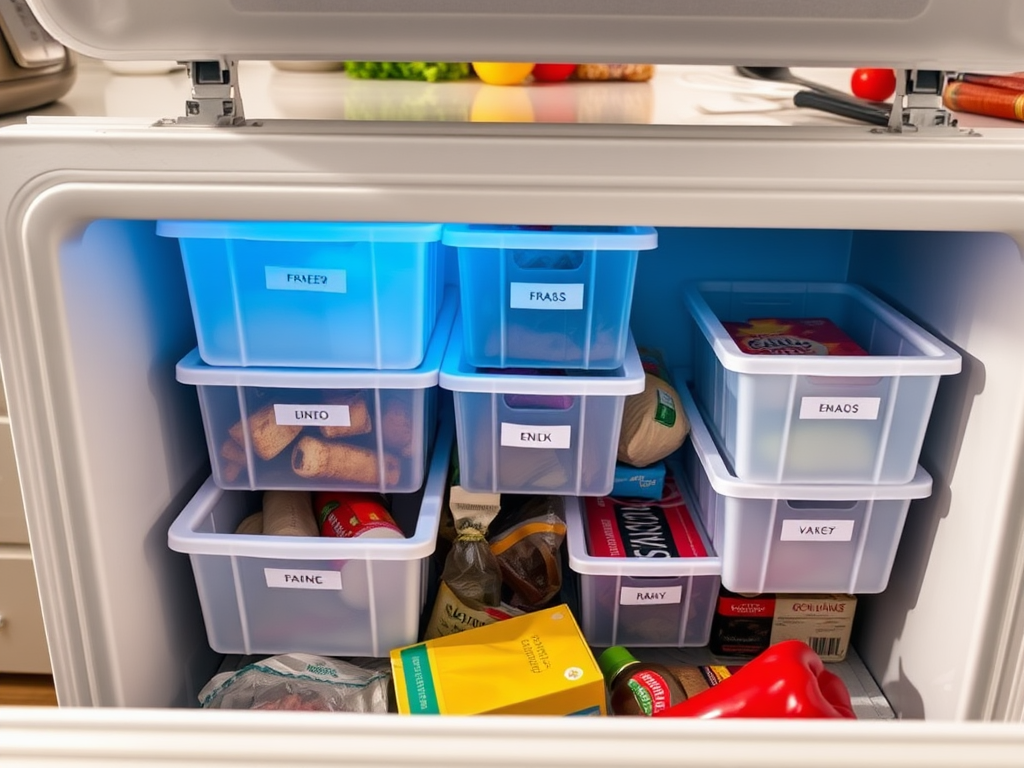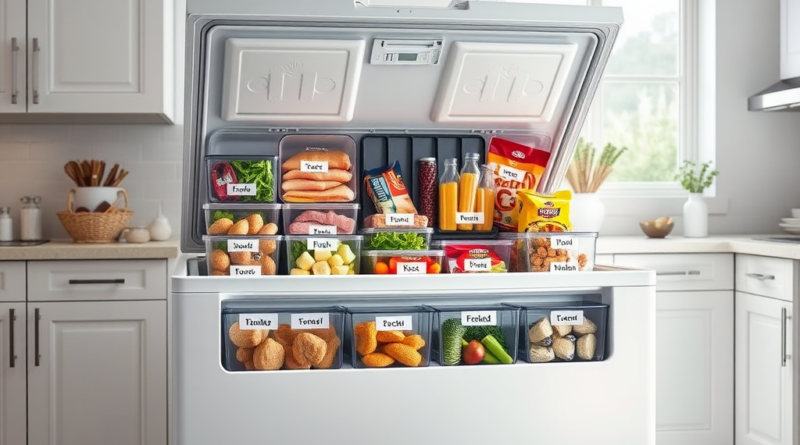Clever Chest Freezer Organization Ideas for Busy Families
When it comes to busy families juggling work, school, and household responsibilities, meal prep often takes a backseat. However, having an organized chest freezer can change the game significantly. It allows families to store bulk purchases efficiently, reduces the likelihood of food spoilage, and simplifies meal planning during the week. Whether you’ve recently invested in a chest freezer or have had one for years, implementing clever organization strategies is key. These strategies will not only enhance your storage capabilities but also save you valuable time.
One aspect that cannot be overlooked is the psychological effect of an organized space. When everything has its place, the chaotic feeling of searching for food items dissipates. Knowing exactly where everything is encourages families to utilize their freezer more effectively, leading to quicker meal preparations. With key organization techniques, families can tackle the often overwhelming task of meal prep head-on. The result? Less stress, more family time, and enjoyable meals without the scramble.
Choose the Right Freezer Baskets

An effective organizational system begins with choosing the right storage baskets or bins. These containers help categorize food items and ensure easy accessibility, allowing you to grab what you need in seconds. Investing in sturdy, stackable baskets helps maximize vertical space in your chest freezer. On the other hand, well-structured dividers can also prevent items from mixing, which can lead to confusion and food waste. This allows busy families to maintain a structured and functional food storage solution.
There are several types of baskets that work particularly well for chest freezers. Each type has its unique advantages, making it easier to keep your items organized:
- Plastic Bins: Lightweight and easy to stack, perfect for general items.
- Wire Baskets: Allow for airflow, which can be beneficial for certain foods.
- Canvas Bins: Soft, flexible options that can easily conform to available space.
Categorize Food Items

Efficiently categorizing food items is essential to maximizing your chest freezer’s potential. Grouping items not only makes retrieval easier but also helps reduce food waste by keeping similar items together. It’s wise to create sections for various categories. For instance, dedicated spaces can be set aside for meats, vegetables, prepared meals, and snacks. This level of organization will prevent rummaging and unnecessary exposure to cold air.
To facilitate easy navigation within your freezer, consider the following categories:
- Proteins: Meats like chicken, beef, pork, and fish.
- Vegetables and Fruits: Frozen produce sorted by type.
- Prepared Meals: Ready-to-eat meals like casseroles and soups.
- Ice Cream and Snacks: Treats that are easy to grab.
Label Everything
Labeling plays an integral role in keeping your freezer organized. This simple method makes finding food items much more intuitive. Additionally, clear labels can prevent items from getting lost in the depths of the freezer, thereby reducing the chances of spoilage. When families actively engage in the labeling process, it not only facilitates organization but also fosters a sense of responsibility regarding food management.
Consider the following labeling techniques for optimal results:
- Waterproof Label Makers: These produce durable labels that can withstand cold moisture.
- Chalkboard Labels: These are reusable and can be easily updated as items are used.
- Color-Coded Systems: Using different colors to categorize items can promote quick identification.
Implement a First-In, First-Out System
The First-In, First-Out (FIFO) system is pivotal for minimizing food waste. By using the older items first, families can ensure food is consumed before it spoils. Implementing this system can be straightforward with a few strategic arrangements. For example, keep your newer purchases at the back and older items at the front for easy access. This simple practice significantly contributes to reducing waste and helps in managing inventory effectively.
For successful FIFO implementation, consider these practical approaches:
- Arrange items in your chest freezer by purchase date.
- Keep a checklist of items on the inside of the lid.
- Regularly rotate stock to maintain freshness.
Regular Inventory Checks
Conducting regular inventory checks is a foundational element in maintaining a well-organized chest freezer. Knowing what you have on hand helps prevent over-purchasing, which can be both wasteful and costly. A systematic approach to inventory can be significantly beneficial for busy families. Monthly or quarterly checks allow families to reassess their food supply and make data-driven decisions on future grocery shopping. Over time, this practice can lead to cost savings and reduced food wastage.
Here’s a simple guide to conducting effective inventory checks:
- List all items currently stored in the freezer.
- Note expiration dates to prioritize consumption.
- Organize items back into their respective categories during the check.
- Update your inventory guide regularly to reflect new purchases.
| Item Type | Category | Expiration Date |
|---|---|---|
| Chicken Breasts | Proteins | 2025-01-20 |
| Mixed Vegetables | Vegetables | 2024-12-15 |
| Lasagna | Prepared Meals | 2024-11-05 |
Conclusion
In summary, organizing a chest freezer effectively can yield tremendous benefits for busy families. It simplifies meal preparation, reduces food waste, and ensures an overall smoother kitchen experience. Incorporating clever strategies such as using baskets, categorizing items, implementing a FIFO system, and conducting regular inventory checks will make the process manageable. Take the time to invest in these organization tactics today, and you will soon discover the surprising ease and efficiency that an organized chest freezer brings to your family’s meal planning routine.
Frequently Asked Questions
- What are the benefits of using a chest freezer over a traditional freezer? Chest freezers typically offer more storage space, better energy efficiency, and a lower chance of freezer burn on food items.
- How often should I organize my chest freezer? It’s advisable to organize your chest freezer at least once every three to six months, or whenever you notice items are hard to find or you are running out of space.
- Can I store anything in a chest freezer? Most food items can be stored in a chest freezer, including meats, fruits, vegetables, prepared meals, and breads. However, avoid storing items with high moisture content that can affect the overall temperature.
- What should I avoid storing in a chest freezer? Avoid storing items that can introduce strong odors (like certain cheeses) or food items that do not freeze well (like eggs in their shells).
- How can I keep track of what’s in my chest freezer? Maintaining a detailed inventory and labeling everything can help keep track of what’s stored, making meal planning and grocery shopping easier.
